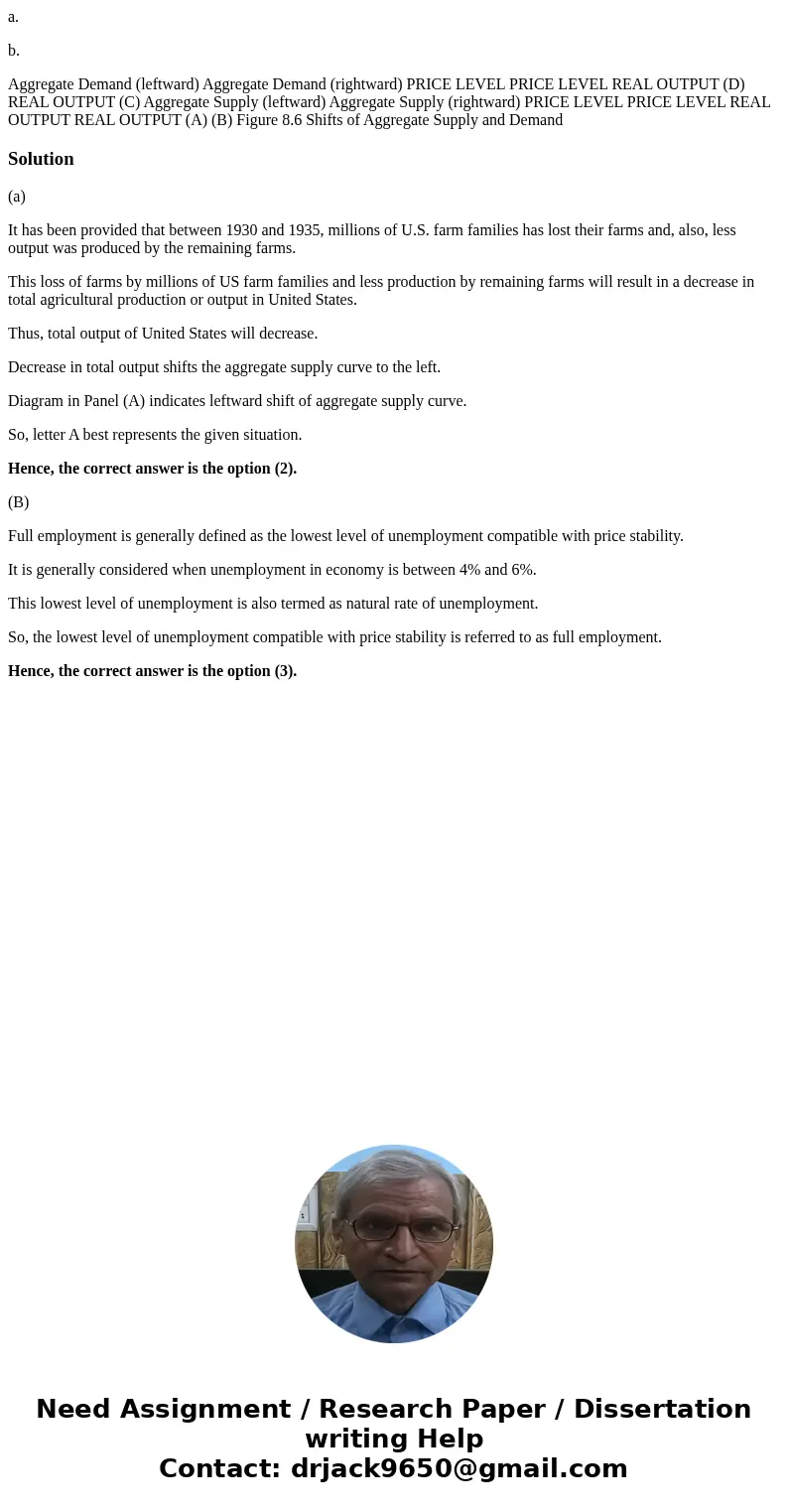a b Aggregate Demand leftward Aggregate Demand rightward PRI
a.
b.
Aggregate Demand (leftward) Aggregate Demand (rightward) PRICE LEVEL PRICE LEVEL REAL OUTPUT (D) REAL OUTPUT (C) Aggregate Supply (leftward) Aggregate Supply (rightward) PRICE LEVEL PRICE LEVEL REAL OUTPUT REAL OUTPUT (A) (B) Figure 8.6 Shifts of Aggregate Supply and DemandSolution
(a)
It has been provided that between 1930 and 1935, millions of U.S. farm families has lost their farms and, also, less output was produced by the remaining farms.
This loss of farms by millions of US farm families and less production by remaining farms will result in a decrease in total agricultural production or output in United States.
Thus, total output of United States will decrease.
Decrease in total output shifts the aggregate supply curve to the left.
Diagram in Panel (A) indicates leftward shift of aggregate supply curve.
So, letter A best represents the given situation.
Hence, the correct answer is the option (2).
(B)
Full employment is generally defined as the lowest level of unemployment compatible with price stability.
It is generally considered when unemployment in economy is between 4% and 6%.
This lowest level of unemployment is also termed as natural rate of unemployment.
So, the lowest level of unemployment compatible with price stability is referred to as full employment.
Hence, the correct answer is the option (3).

 Homework Sourse
Homework Sourse